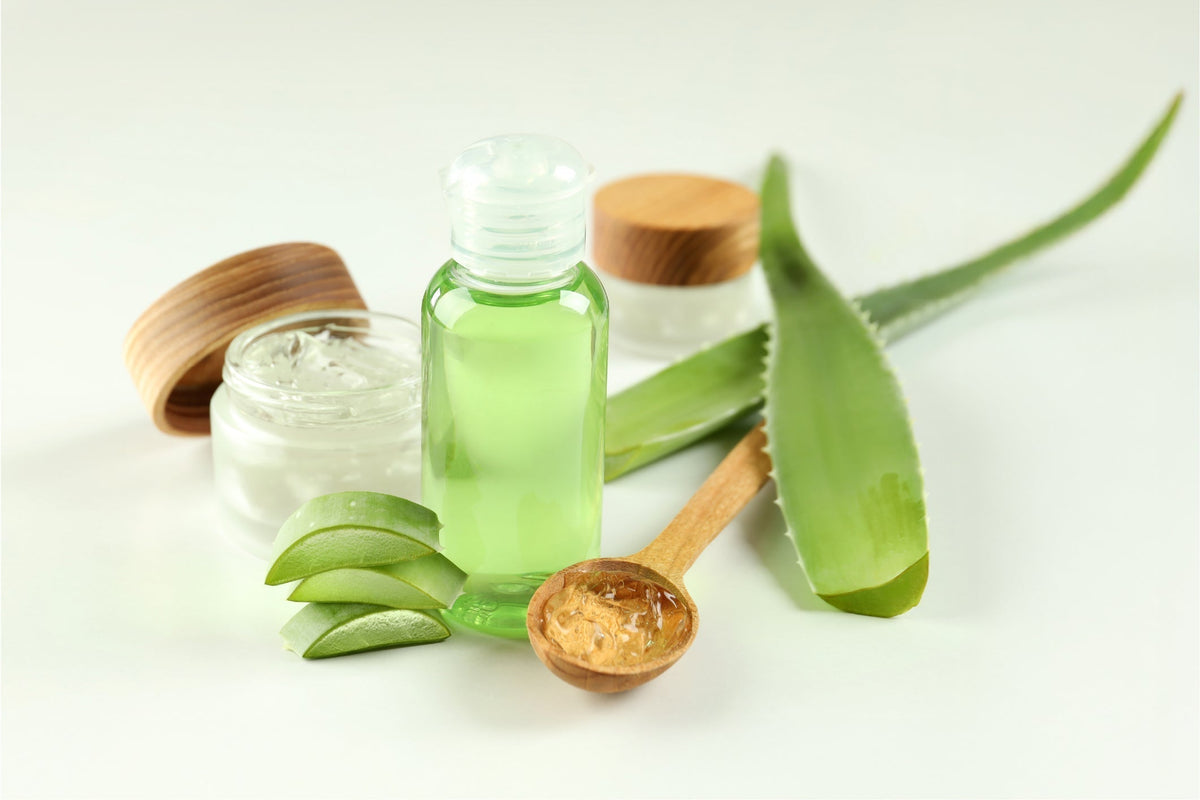
Soothing gels have become a staple in countless skincare routines. Their feather-light texture, fast absorption, and instant cooling effect make them a go-to when skin feels irritated or flushed. Among the many, two stand out: Cica gel and pure Aloe Vera gel. Both are celebrated for delivering a boost of hydration while helping skin bounce back from stress or damage.
That naturally raises a common question: can you use them at the same time? And, more importantly, would layering them actually benefit your skin? Well, let’s find out!
What is Cica Soothing Gel?
Cica—short for Centella Asiatica—comes from a small green plant that’s been used for centuries to treat and soothe the skin. It’s rich in natural compounds, including madecassoside and asiaticoside, which help calm irritation, reinforce the skin’s own defenses, and encourage it to heal itself.
You’ll often see Cica gel in products made for skin that’s quick to flare up, breaks out easily, or just feels worn down. It can ease redness, take the sting out of irritation, and help skin recover—whether the cause is a breakout, too much exfoliating, or rough weather.
What is Aloe Vera Soothing Gel?
For as long as people have been tending to their skin, aloe vera has had a place on the shelf. The clear gel inside its leaves is rich in nutrients and natural compounds that bring quick relief to dry, stressed, or overheated skin.
You might apply it after a day in the sun, swipe it across freshly shaved skin to ease that sting, or use it to cool down after being outdoors in the heat. It also helps the skin hold on to moisture and gives a light layer of hydration that feels fresh, never heavy.
Since it’s non-comedogenic and gentle, aloe vera is suitable for nearly every skin type. You’ll see it in everything from moisturizers to sheet masks to spot treatments.
Can They Be Mixed?
Yes, you can mix Cica gel and Aloe Vera gel—and in many cases, your skin will thank you for it.
Both ingredients are water-based and sit well together in terms of texture and absorption. They don’t interfere with each other chemically, so there's no risk of neutralizing their benefits. A simple Aloe Vera mix with Cica works well for layering or spot treatment.
Still, it’s worth knowing how your skin behaves. If you’ve never used either before, don’t mix right away. Try them individually first to understand how your skin responds.
Benefits of Mixing Cica and Aloe Vera
Together, these ingredients cover more ground than either can alone.
1. Hydration + Repair: Aloe draws moisture in; Cica helps keep it there by supporting the skin’s natural barrier. Your skin stays hydrated longer and recovers faster from damage.
2. Redness and Inflammation: Both calm redness and irritation. If you’re dealing with sensitivity, mixing them can provide instant relief without adding weight.
3. Non-comedogenic, Gentle Base: This aloe vera Cica combination won’t clog pores or trigger breakouts. It’s ideal for oily, sensitive, or acne-prone skin.
How to Mix and Apply Cica and Aloe Vera Soothing Gels
Step-by-Step Guide
- Clean it up: Wash your face using a mild cleanser that won’t leave it feeling tight or dry.
- Keep a little moisture: Don’t towel off completely — a light layer of water on your skin helps both gels sink in better.
- Mix your blend: In your palm, combine equal parts Cica gel and pure Aloe Vera gel.
- Apply with care: Smooth the mixture over your face, or just target the spots that feel irritated or dehydrated.
- Give it a moment: Let your skin drink it in before you move on to anything else.
- Lock it in: If you need extra comfort — especially before bed or in dry air — follow with a moisturizer.
- Morning tip: During the day, finish with sunscreen to keep that fresh skin protected.
Precautions to Consider
1. Most people can use these ingredients without trouble, but it’s still worth doing a quick patch test. Put a small amount on the inside of your arm, leave it alone for a full day, and see how your skin reacts. If there’s no stinging, redness, or itching, you’re fine to move forward.
2. Try not to pair them with gritty scrubs or strong chemical actives during the same routine. Let their calming effect take center stage instead of clashing with harsher products that could make skin more reactive.
3. When it comes to aloe vera, fresh is best — but only if you’ve prepared it carefully and kept it clean. If you’re not sure about its freshness or handling, a store-bought version labeled pure and free from unnecessary extras is the safer choice.
Conclusion
Mixing Cica and Aloe Vera soothing gels is not only safe but also beneficial for most skin types. Together, they provide deep hydration, calm irritation, and support overall skin repair—making them a powerful duo in any skincare routine.
FAQs
1. How to preserve Aloe Vera gel?
Store-bought pure aloe vera gel usually includes safe preservatives and lasts several months. If you're using fresh aloe from the plant, keep it in an airtight container in the refrigerator. It should stay usable for 5–7 days.
2. Does Aloe Vera gel remove pimples?
It can support acne-prone skin, but it doesn’t “remove” pimples overnight. Aloe Vera has antibacterial as well as anti-inflammatory properties that reduce redness and soothe active breakouts. It’s best used alongside acne treatments, not as a standalone solution.
3. What does Cica do for skin?
Cica calms inflammation, speeds up healing, and strengthens the skin barrier. It’s especially useful for post-acne care, sensitivity, and repairing skin after using strong actives. If your skin feels irritated or compromised, Cica gel helps restore balance without adding weight or clogging pores.



